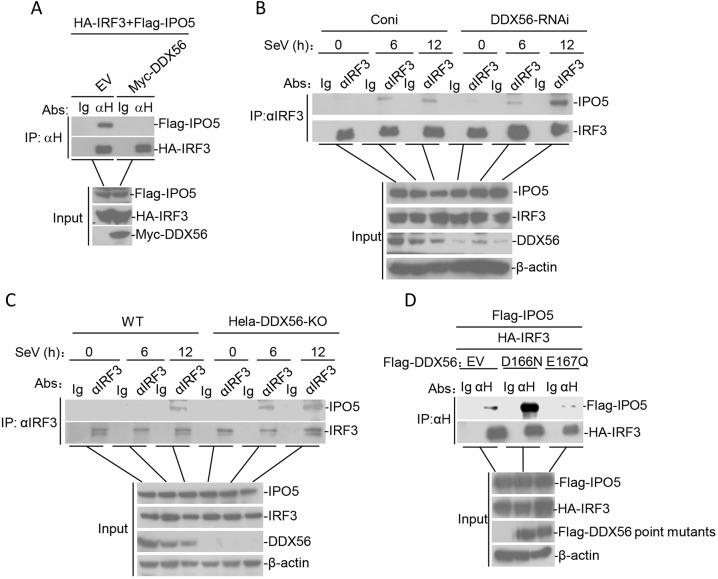Fig. 7.
DDX56 disrupts the IRF3–IPO5 interaction. (A) Effects of DDX56 overexpression on the IRF3–IPO5 interaction. 293T cells (2×106) were transfected with the indicated plasmids (5 µg each). Co-immunoprecipitations (IP) were performed with anti-HA antibody or control IgG. Immunoblot analysis was performed with anti-HA and anti-Flag antibodies (upper panels). Expression levels of the proteins were analyzed by immunoblot analysis of the lysates with anti-HA and anti-Flag (lower panels). (B) Effects of DDX56 knockdown on the IRF3–IPO5 interaction in 293T cells. The DDX56-RNAi stable 293T cells (5×107) were left untreated or treated with SeV for the indicated times. Co-immunoprecipitations were performed with anti-IRF3 antibody or control IgG. (C) Effects of DDX56 deficiency on the IRF3–IPO5 interaction in HeLa cells. Experiments were performed in a similar manner to those in B. (D) DDX56D166N does not affect the IRF3–IPO5 interaction. The 293T cells (3×106) were transfected with the indicated plasmids together with DDX56D166N or DDX56E167Q expression plasmids (5 µg). Co-immunoprecipitation and immunoblotting were performed with the indicated antibodies. EV, empty vector; H, HA tag.

